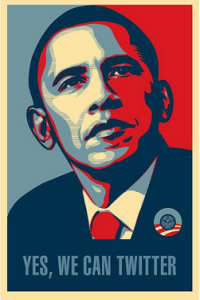Social Media Offers Politicians a New Means to Reach Constituencies
By James Gelfer In Opinion, Viral Marketing, Web 2.0
Traditionally, a candidate needed to take out ad space in order to deliver a message that wasn’t filtered through a journalist, and aside from an op-ed piece, there was little opportunity for conversation or to gauge the public response. With social media, however, there is no intermediary or barriers of communication. Politicians now have the capacity to justify why they voted for a piece of legislation, elected a certain cabinet member or any other decision in their own words—and voters have the chance to respond. Justin Amash, a Republican State Representative from Michigan, has begun posting all of his votes on his Facebook Fan Page, along with an explanation of decision.
“It has helped me to gain credibility with voters,” Amish said in an e-mail interview with Gist’s Matt Silverman. “When I say that I’m a principled, consistent conservative, people know that it’s true. They can see it, and they can tell from our discussions that I’m actually reading the bills.”
And while this sort of transparency is certainly one of the benefits of social media, many are looking to utilize it as an alternative to traditional campaign advertising. It’s no secret that politicians in America are perpetually in campaign mode, and social media allows them to stay in the public eye throughout the year. Contemporary campaigns cost millions of dollars, but with social media, candidates can reach targeted demographics cheaply and easily.
Much of Obama’s success in the 2008 campaign was attributed to his use of social media, and when you look at the numbers, it’s hard to debate the issue. When compared to McCain, Obama was mentioned in 350 million more blog posts, had nearly four times as many friends on MySpace and boasted more than twenty times as many followers on Twitter.
Sarah Palin, one of the most recognizable political figures in America, ironically doesn’t even hold an elected position. Instead, Palin has used social networking sites, such as Facebook, to campaign for various conservative causes. And while it may seem like Palin would have more clout as the Governor of Alaska, her Facebook page has served as an effective channel for delivering conservative messages to followers around the country on issues as varied as healthcare reform, energy and transportation.
As the full potential of social media is still being discovered, its political uses will certainly expand. (Just this week, defunct Illinois Governor Rod Blagojevich announced he will be tweeting updates during his corruption trial.) While social media certainly has the potential to be a powerful informational tool, creating a collaborative dialogue between elected officials and the public, it is just as likely—if not more so—to be used as a new implement to broadcast talking points, rhetoric and perpetuate the bipartisan, campaign-driven political landscape many of us have come to expect.


No Comment